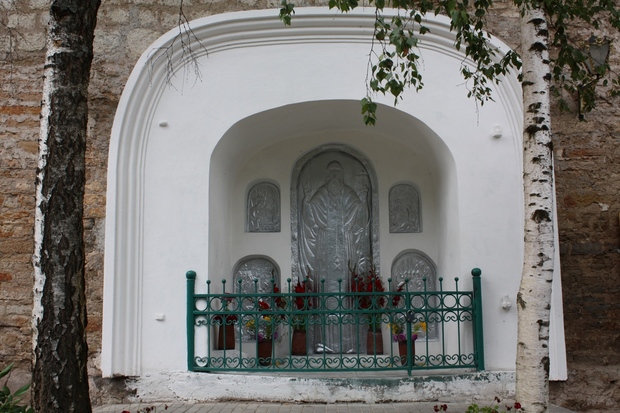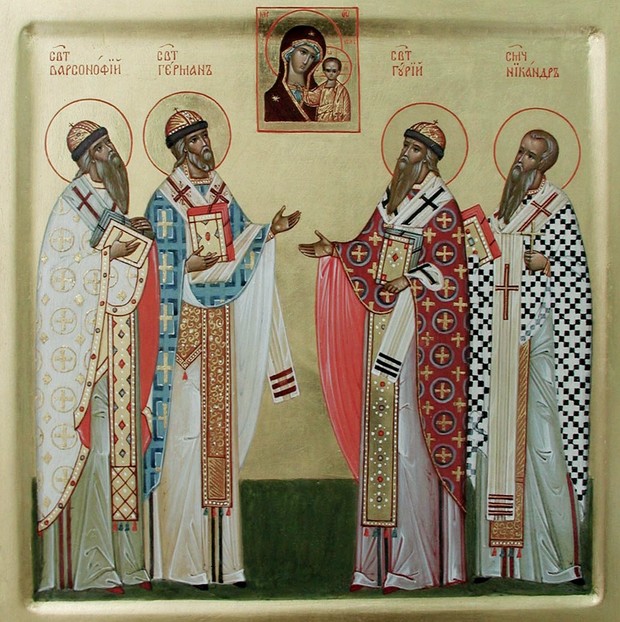‘It is incorrect to put a monument to Ivan the Terrible in Kazan. The siege of Kazan was a mass murder’
Why is a monument to Ivan the Terrible inappropriate?
A monument to Ivan the Terrible has recently been erected in Oryol, this fact has caused heated debates in the intellectual circles of Russia. Soon, this monument will be in Aleksandrov, Vladimir region. The admirers of the Russian Tsar also suggested to establish a monument to Ivan IV in other cities, including Kazan. This initiative has been perceived in Tatarstan very painfully. A Kazan journalist, historian and publicist Mark Shishkin believes that it is wrong to put the monument to Ivan the Terrible, who brutally oppressed the defenders of the city and who is the executioner of the Holy elders. He stated his position in a newspaper column, written specially for Realnoe Vremya.
The executioner for the saints
The Orthodox point of view on the veneration of Ivan the Terrible is best expressed by late Patriarch Aleksy II, who said: 'You can not worship murderers and their victims. It's crazy.' Meanwhile, the biography of Tsar Ivan is well known and among his victims there are those, whom the Church venerates as saints. The most famous example is, of course, a metropolitan Philip (Kolychev), who denounced the policy of oprichnina terror, and was deposed from the pulpit by the order of Grozny and killed by Malyuta Skuratov.
Reverend Cornelius, the hegumen of the Pskovo-Pechersky Monastery, was killed by Ivan the Terrible himself. This monastery in the Pskov region is one of the most respected in Russia, suffice it to say that even in the Soviet times the monastic tradition was not interrupted here. One day, the Tsar came to the Monastery. St. Cornelius met him at the gate with royal honours, but the Tsar in a fit of anger killed the elder man. They say that he was confused by good fortifications of the monastery, which actually was on the border with the Livonian order and could not do without them. Perhaps, the reason for Tsar's anger was that the monk communicated with the opposition leader Knyaz Andrey Kurbsky. But everyone saw this clear evil. After that, Ivan the Terrible came to his senses, took the body of the saint and carried into the Church, where he was buried with honors. Until now, this 'bloody path' is marked on the cobblestones.

The way of life of Ivan IV and the type of religiosity, which he embodied, give a lot of reasons to treat the figure with caution. Of course, he was a man of his era, when the Middle ages ended and the Modern history started. The era was very painful, accompanied by the living principles breakage. It was at this transitional time when in Europe bonfires of the Inquisition often lit, not in the Middle Ages, as is commonly thought. At the same time, there was a growing interest in magic, occultism, and other non-religious things. In the north and in the center of Europe there was the Reformation under the slogan of returning to 'pure Christianity'. This is the era of extremes. Tsar Ivan was a clear expression of all these extremes on Russian land. Yes, he is a very interesting historical character, an unusual person and great in something. But the fact that his actions go far beyond the norm was perfectly understood by his contemporaries and immediate descendants. Now there is no reason to revise this assessment.
The tragedy of Herman of Kazan
The idea of a monument to Ivan the Terrible in Kazan is inappropriate because it is disrespectful to the memory of an archbishop Herman of Kazan. For a long time, in official hagiographies it was written that the second Kazan archiereus just died during 'the plagues', being in Moscow. However, much of the evidence allow us to assert that it was different. An archiereus Herman rightly be called a hieromartyr.
There are several versions of further developments. Knyaz Andrey Kurbsky claimed that Ivan the Terrible wanted to assign the archiereus of Kazan as Metropolitan of Moscow, even before an archiereus Philip was assigned. They had many conversations, and an archiereus Herman pointed out to the Tsar at his wrong decisions in private life and public activities. Neither Ivan nor his oprichnina people liked it, and a few days later the archiereus was found dead. According to the life of an archiereus Philip, Herman of Kazan was the one who took the side of Metropolitan, when he was persecuted for his criticism of the oprichnina. For this, the oprichnil killed him in his cell by two blows of an axe.
There could be other reasons for this murder. Prior to the Kazan land appointment, Herman was an abbot of the monastery in the town of Staritsa. This was the possession of Knyaz Vladimir Andreyevich, who was considered as an alternative to the Terrible to the throne by many. The whole family of the Staritsky also became a victim of the oprichnina terror.

A Kazan historian Yevgeny Lipakov, who created a fundamental work on the biographies of all the bishops of Kazan, noticed that the lives of archiereuses Guriy and Varsonofy were written in the late sixteenth century by the Metropolitan Germogen. The life of a archiereus Herman appeared much later — in the XVII century. Apparently, Hermogen did not want to write deliberate lies about the death of Herman, but to tell the truth was dangerous.
An archiereus Herman of Kazan was a man of outstanding. Even Kurbsky, critically evaluating ecclesiastical realities of his era, noted his intellectual advancement and his human qualities. By origin, he was of the Rurik line of knyazes of Smolensk. Among the ancestors there were the rulers of the Ancient Russian state, anage princes. Coming together with the Archbishop Guriy to Kazan, he was engaged in the construction of Church life on the right Bank of the Volga. It is due to Herman we have the ensemble of Sviyazhsk Dormition Monastery and the unique frescoes of the Assumption Cathedral.
Specific religiosity
Although the name of Ivan the Terrible is usually associated with the expansion of Orthodoxy, he did a lot to undermine the authority of the Church. The elimination of independent individuals who were able to tell him 'no', the promotion of conformity in the Church environment, the lifestyle of the Tsar and his milieu, who were far from Christian morality, — it was the first step towards the transformation of the Church from the spiritual master and arbitrator to an appendage to the state machine.
The personal religiosity of the Tsar was so hysterical and subjected to fluctuations that it is unclear how one person could endure so much. He prayed a lot, even made liturgical texts, many donated to the needy, but, at the same time, he recognized no religious discipline, no authority. A rampant of 'monastic brotherhood' of the oprichniks was a natural consequence, and a regular and earnest repentance of the Tsar for all committed murders and atrocities was more like a psychological compensation.
Even if to turn a bling eye to all the bloody things, the Tsar Ivan can hardly be called saint, like some marginal groups suggest.

Where is the monument appropriate?
A few years ago in Astrakhan it was offered to erect a monument to Batu Khan. The logic is clear: in times of Batu, the territory of the Astrakhan region became the center of the vast Empire, where the roads led and wealth flowed from around the world. Batu could become a regional tourist brand, like the decorations for the film 'The Horde' did, the film depicts the ancient Saray. But this absolutely apolitical initiative immediately has caused a lot of noise and the overwhelming majority reacted with hostility. The reasons need no explanation. For many Russian cities Batu is a brutal conqueror.
Exactly for the same reason, it is incorrect to put a monument to Ivan the Terrible in Kazan. The siege of Kazan in 1552 is not just an effective military operation. It is also the mass murder of the inhabitants of the captured city, that was considered a demonstrative brutality in the XVI century as well, and today constitutes a war crime. For this reason, such monument is inappropriate in Veliky Novgorod, where the oprichniks killed a large part of the population.
If there's one city where such monument would be acceptable, it is Aleksandrov in the Vladimir region. In the XVI century it was the Alexandrovskaya Sloboda — the actual capital of the country, where the Tsar departed from Moscow, where the oprichniks held their gloomy masquerades. Many centuries later such a significant fragment of local history is a legitimate way to make money. And here in Kazan, Novgorod and Astrakhan, we have our own ways how to make the past relevant and interesting.